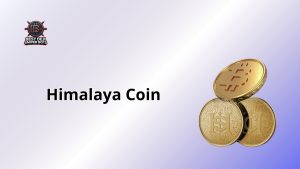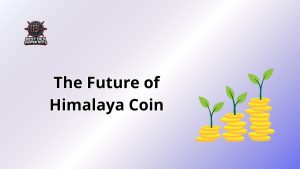The Himalaya coin (HCN) emerged as a controversial cryptocurrency tied to the Himalaya Exchange, launched in 2021 with ambitious claims of revolutionizing digital finance. Promoted by exiled Chinese billionaire Guo Wengui and former Trump advisor Steve Bannon, it promised a secure, scalable ecosystem but faced significant scrutiny, including fraud allegations and a U.S. government seizure in 2023. This article delves into the Himalaya coin definition, its history, applications, risks, and potential, providing an SEO-optimized guide for investors and crypto enthusiasts navigating its complex narrative.
Contents
- What Is Himalaya Coin?
- Historical Context and Price Performance
- Applications of Himalaya Coin
- Controversies and Legal Issues
- Distinguishing Himalaya Coin from Himalayan Cat Coin
- Risks of Investing in Himalaya Coin
- The Future of Himalaya Coin
- Best Practices for Investors
- Should You Consider Himalaya Coin in 2025?
What Is Himalaya Coin?
The Himalaya coin (HCN) is an Ethereum-based ERC-1404 token, backward compatible with ERC-20, designed to operate exclusively within the Himalaya Exchange ecosystem. Launched in November 2021 alongside the Himalaya Dollar (HDO), a USD-pegged stablecoin, HCN aimed to facilitate payments and offer discounts with Himalaya Pay merchants. The exchange, operated by Himalaya International Clearing Limited, marketed itself as a global platform for trading HCN and HDO, emphasizing borderless, secure transactions.
However, the Himalaya coin faced significant controversy. In 2023, the U.S. Department of Justice (DOJ) seized $634 million from Himalaya Exchange accounts, alleging that HCN and HDO were not true cryptocurrencies but rather “credits” tradable only within the exchange’s ecosystem. Former CEO Jesse Brown testified in 2024 that HCN was not on a blockchain and was not available for purchase at launch, despite claims of a $27 billion valuation.
Historical Context and Price Performance
The Himalaya coin debuted at $0.10 in November 2021, with reports claiming a surge to $27 within two weeks, equating to a $27 billion market cap based on 1 billion issued coins. However, these valuations were questioned, with experts like Dr. Aaron Lane stating there was “absolutely no chance” the $43 billion valuation was accurate. By 2023, after the DOJ seizure, HCN’s price reportedly fell from $24 to $14 per token, reflecting significant volatility and loss of confidence.
Unlike widely traded cryptocurrencies, HCN was only available on the Himalaya Exchange, not listed on major platforms like CoinMarketCap, raising concerns about transparency and liquidity. The exchange’s website was seized in 2023, and redemptions were paused, leaving investors unable to access funds. As of July 11, 2025, no current price data is available due to the exchange’s closure and lack of trading activity.
Applications of Himalaya Coin
Initially, the Himalaya coin was marketed for:
- Payments and Discounts: HCN was intended to offer discounts with Himalaya Pay merchants, enabling seamless transactions within the ecosystem.
- Ecosystem Integration: Paired with HDO, HCN aimed to support purchases within Guo’s business network, including G CLUBS and G FASHION, though these were later tied to fraud allegations.
- Anti-CCP Narrative: Promoted by Guo and Bannon as a tool against the Chinese Communist Party, HCN was pitched as a means of financial independence, resonating with Mandarin-speaking investors. Over half of the exchange’s 20,000 accounts were held by Mandarin speakers.
However, the DOJ alleged that HCN could not be traded for fiat or other cryptocurrencies, limiting its utility to the Himalaya ecosystem, which was criticized as a closed system.
Controversies and Legal Issues
The Himalaya coin faced significant legal and regulatory challenges:
- Fraud Allegations: In 2023, Guo Wengui was indicted for defrauding investors of over $1 billion, with $600 million tied to the Himalaya Exchange. Prosecutors alleged that HCN was misrepresented as a blockchain-based cryptocurrency and that claims of gold backing were false.
- Government Seizure: The DOJ seized $262 million from Himalaya Exchange accounts in 2023, impacting HDO’s reserve and causing HCN’s value to plummet. Investors reported “catastrophic losses” as redemptions were halted.
- Regulatory Warnings: Regulators in New Zealand, the Bahamas, and British Columbia issued warnings about the Himalaya Exchange, citing unregistered activities and potential illegality.
- Misleading Claims: Former CEO Jesse Brown testified that he avoided disclosing HCN’s lack of blockchain integration to protect its value, and a faked Ferrari purchase with HDO misled investors about its utility.
These issues led to the Himalaya Exchange’s closure and skepticism about HCN’s legitimacy, distinguishing it from other cryptocurrencies like Himalayan Cat Coin (HIMA), a Solana-based memecoin.
Distinguishing Himalaya Coin from Himalayan Cat Coin
It’s critical to differentiate the Himalaya coin (HCN) from Himalayan Cat Coin (HIMA), a separate memecoin on the Solana blockchain. HIMA, launched in 2021, is a community-driven token inspired by Samoyedcoin, aimed at introducing users to Solana’s ecosystem. As of July 2025, HIMA trades at approximately $0.00000072 with no verifiable market cap due to inactivity. Unlike HCN, HIMA is traded on decentralized exchanges like Raydium, though it has low trading volume ($1.06 in 24 hours). HIMA has no connection to the Himalaya Exchange or its controversies.
Risks of Investing in Himalaya Coin
Investing in the Himalaya coin carries significant risks:
- Lack of Transparency: HCN’s exclusion from major exchanges and lack of blockchain integration raised red flags about its legitimacy.
- Regulatory Scrutiny: Warnings from global regulators and the DOJ seizure highlight legal risks.
- Liquidity Issues: HCN’s restriction to the Himalaya Exchange and halted redemptions left investors unable to access funds.
- Fraud Allegations: Guo’s indictment and allegations of misrepresented valuations and utility underscore the risk of fraud.
Investors should exercise extreme caution and conduct thorough due diligence, as the Himalaya coin is currently inaccessible due to the exchange’s seizure.
The Future of Himalaya Coin
The future of the Himalaya coin is uncertain. The Himalaya Exchange’s closure and ongoing legal proceedings against Guo Wengui have severely undermined HCN’s viability. Unlike other cryptocurrencies leveraging blockchain transparency, HCN’s closed ecosystem and lack of external trading limit its recovery potential. However, posts on X from 2021 show initial enthusiasm, with the exchange promoting HCN as a revolutionary currency. These sentiments are outdated, and no recent activity suggests a revival.
In contrast, projects like Bhutan’s state-backed Bitcoin mining demonstrate how Himalayan-region entities are exploring legitimate crypto opportunities. For HCN to regain traction, it would require new leadership, regulatory compliance, and listing on reputable exchanges, all of which seem unlikely given current circumstances.
Best Practices for Investors
To navigate the complexities of the Himalaya coin:
- Verify Sources: Ensure any platform or coin is listed on trusted exchanges like Coinbase or Binance.
- Research Thoroughly: Investigate whitepapers, team backgrounds, and regulatory status before investing.
- Avoid Hype: Be wary of coins promoted with grandiose claims, especially those tied to controversial figures.
- Diversify Investments: Spread risk across established cryptocurrencies to mitigate losses from high-risk tokens.
Should You Consider Himalaya Coin in 2025?
The Himalaya coin (HCN) promised a revolutionary crypto ecosystem but was marred by fraud allegations, regulatory issues, and a U.S. government seizure, rendering it inaccessible as of July 2025. Its history serves as a cautionary tale for crypto investors, highlighting the importance of transparency and due diligence. While other Himalayan-themed projects like HIMA or Bhutan’s Bitcoin ventures show potential, HCN’s future remains bleak. How will you approach high-risk cryptocurrencies like Himalaya coin in your investment strategy?

